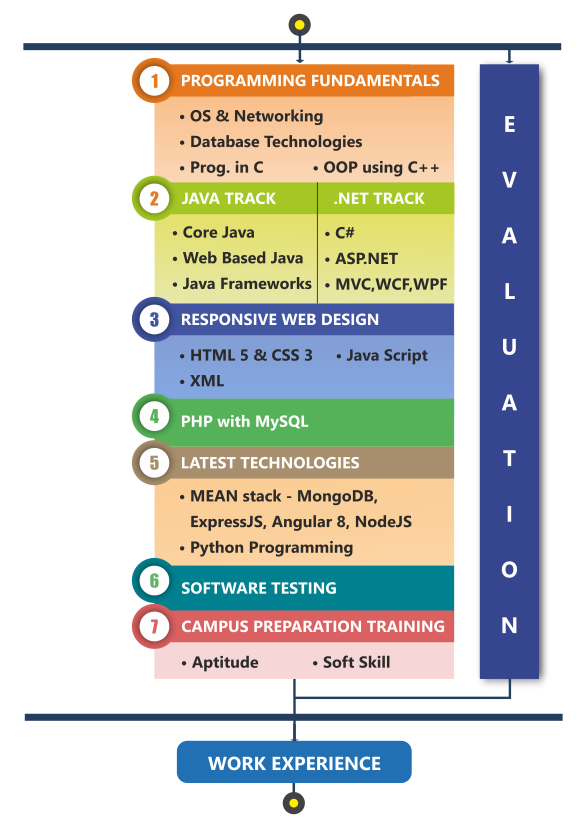About P-DAC
This Program is designed to cover Multi Technologies as per industry demand so as to make you proficient in all technologies.
This program also covers Aptitude, Softskills. This Diploma is recommended for Freshers seeking Job in IT Industry.
Eligibility :
- BE, BTech, BSc, BCS, MCA, MCS, ME, MTech
- Eligible branches are CS, IT, EC, E&TC, Electronics
- Aggregate 55% in 10th/12th/Diploma/Degree/PG
Why PDAC ?
- 6 months full time hands on training on multiple IT skills with 950+ hrs of theory + practical ( Model 1)
- 12 months Experience Letter ( including 6 mths hands on training & 6 months of internship with stipend) ( Model 2)
- Courses designed in consultation with industry Experts
- Updated Syllabus as per latest trends in the IT industry
- Training on Upcoming Technologies like Angular 5, DevOps etc
- Guidance & Sessions by Industry Experts
- Training on Aptitude,Softskills and Interview skills
- Priority Campus Placements with 3000+ Clients
PDAC - Common Entrance Test ( PDAC-CET ) :
It is based on Online Test 1.5 hrs ( Aptitude Test - 1 hour, C Prog - 30 min ) followed by Personal Interview.

 Batch Schedule
Batch Schedule Download Brochure
Download Brochure